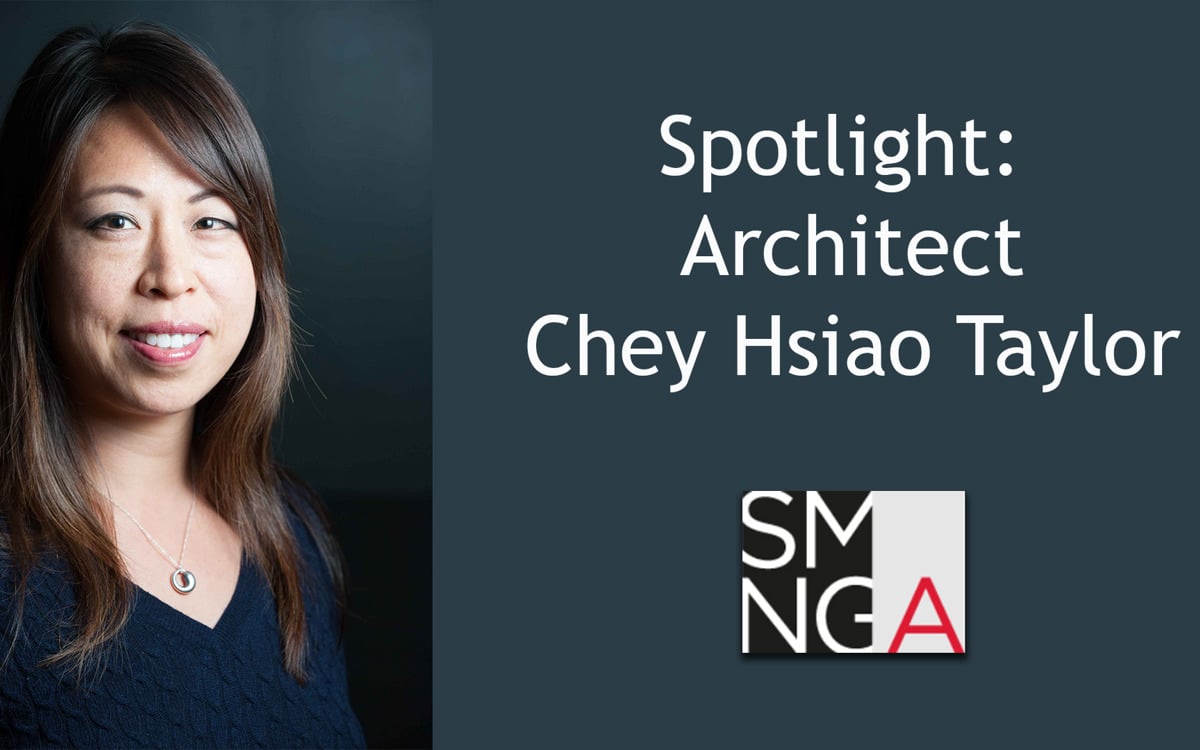
Our architect spotlight series continues with Chey Hsiao Taylor. An Associate at SMNG A in Chicago since 2014, she is working with EQUITONE on the Academy for Global Citizenship, a custom color educational project currently under construction.
She has over 20 years experience as Project Architect, Construction Administrator, and Sustainability Manager of early childhood, K-12 educational, and community development agency projects. Chey utilizes her theoretical and applied design techniques and construction phase experience to help facilitate accuracy, consistency, and technical and design quality in support of SMNG A Ltd.’s work. Ms.Taylor is active in AIA Chicago and currently serves on the Board of Directors as the Vice President of Education.
To celebrate Women's History Month, Ms. Taylor provided us insights into the experiences and knowledge from her career that has made her a respected figure in her field.

What inspired you to be an architect?
I discovered architecture as a 3rd year undergraduate student studying biology at the University of California, Berkeley, when I decided to explore other career paths to see if there might be something I felt more passionate about. I knew I enjoyed physics and making art, and I always had an anthropological curiosity about the built environment (at one point as a child, I wanted to be an archeologist), but I had no knowledge of other fields other than the medical profession. Inspired by friends in the Department of Architecture, I enrolled in the first year architecture studio classes - which turned out to be life changing. Not only did I find architecture to be a harmonious synthesis of science and art, I realized the impact architecture had on how people lived and worked, interacted with nature, and interacted with each other. It inspired me to participate in the process of creating a more thoughtful, mutualistic symbiotic, and humane society. I applied to and was accepted into the Department of Architecture, and now am a licensed architect with over 20 years experience in the profession.
Who are your favorite architects?
Herzog and de Meuron, Alvar Aalto, and Kengo Kuma. I appreciate how they use humble materials in beautiful and monumental ways.
What projects have you worked on that you are most proud of?
My career has been mostly in the education sector, primarily K-12 public schools and in Early Childhood and family support facilities. When I first moved to Chicago in 2007, I worked on the Chicago Public Schools Skinner West Elementary School that was one of the very first schools certified under the new LEED for Schools rating system. While I value all projects of all scales, as with each intervention others’ lives are being improved in some way, I feel that our current Academy for Global Citizenship School is the culmination of all of my and our team’s experiences in school design, building technology and sustainability.
How can the building industry encourage diversity in architecture?
To encourage diversity in architecture, we need to better understand the barriers to entry in the profession and to make efforts to reduce those barriers. Architecture is similar to the medical and legal professions in that practitioners starting in the career need experience to gain the knowledge about all the parts and pieces of the building process, in order to effectively coordinate and direct the work. I think the building industry should work at finding ways to be more supportive of a healthy life balance – work, family, finances, health – and still provide young practitioners with the knowledge and experience to advance in the profession .
What advice would you give to young girls interested in architecture?
Architecture is a well rounded profession that blends science and art, as well as the ability to listen and communicate well. I encourage young girls interested in architecture to learn more about what each part of the building process entails: art, technology, engineering, materiality, the construction process. Also, look for opportunities to work collectively on tasks whether it be in school, sports or in volunteer projects. Be confident about what you know and don’t be afraid to ask questions. Most importantly, stay curious about the world.
What do your family and friends think you do as an architect compared to what you really do?
My family and friends think I sit in front of a computer and work on drawings all day, however that is just one part of the process. I also visit project sites and assess how existing spaces are currently used, listen to the needs and desires of project stakeholders, mediate what are sometimes competing priorities of project needs, budget constraints, engineering and code requirements, translate ideas into spatial experiences, monitor the construction process and help interpret specifications and 2D drawings to 3D reality on the construction site.
What legacy do you hope your career leaves?
In addition to my work as a practicing architect, I also currently serve on the Board of Directors as the Vice President, Education of the American Institute of Architects in Chicago. Initiatives that I have led in my 10 years of volunteering with this professional organization include the development of an Architect in Schools program in which local architects go to CPS middle schools and lead students through an 8-week design charette, using their own neighborhood as the project site. With this program, and with my work, I hope to inspire another generation to imagine better futures and teach them tools to improve the world around them.
More information about Taylor and the firm SMNG A can be found at http://www.smng-arch.com